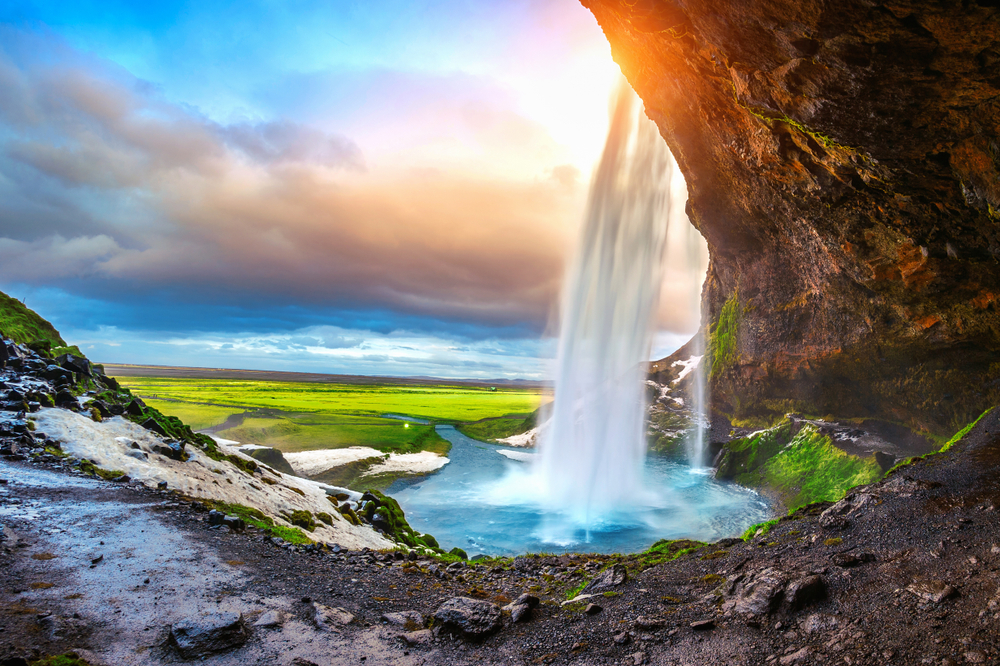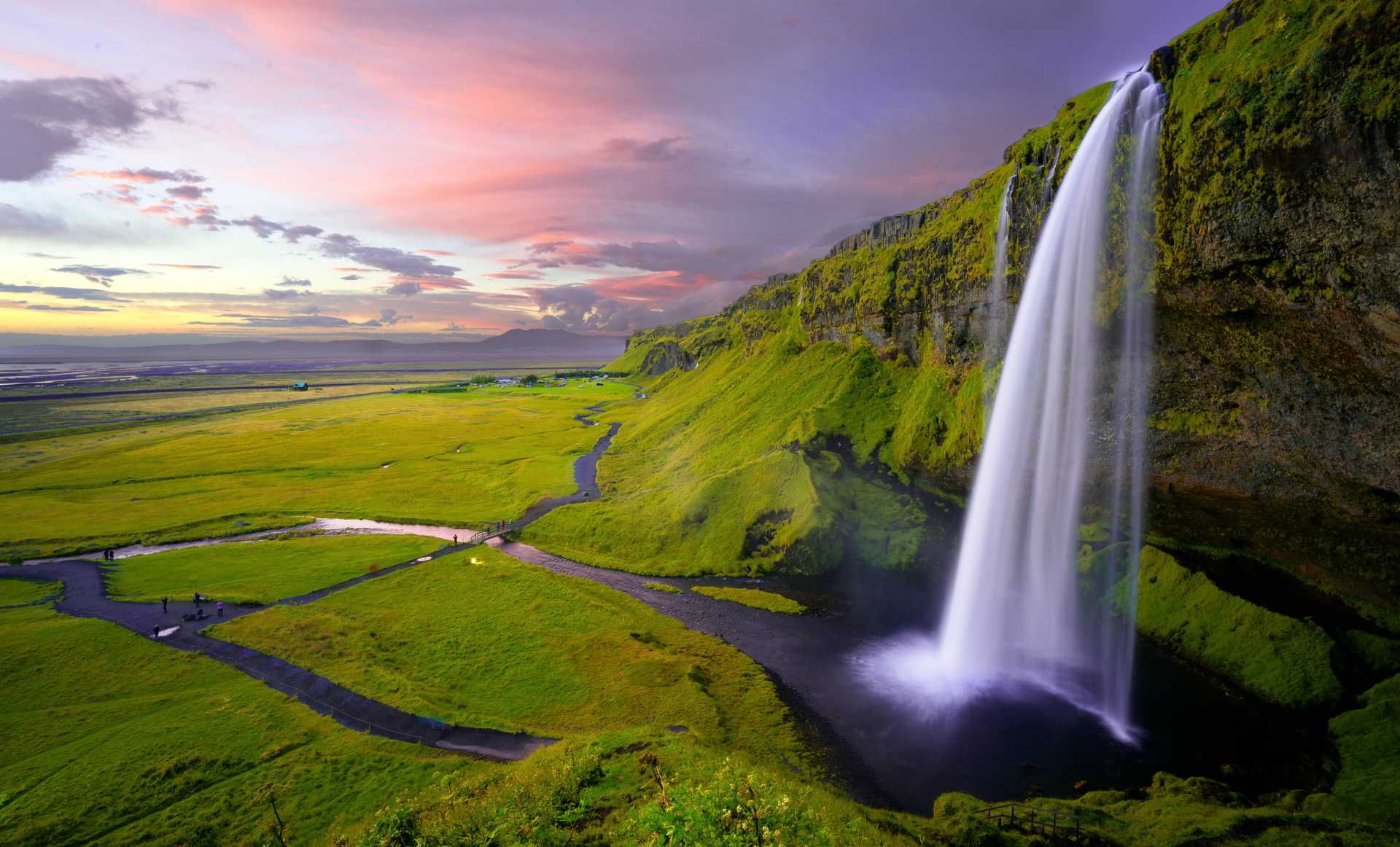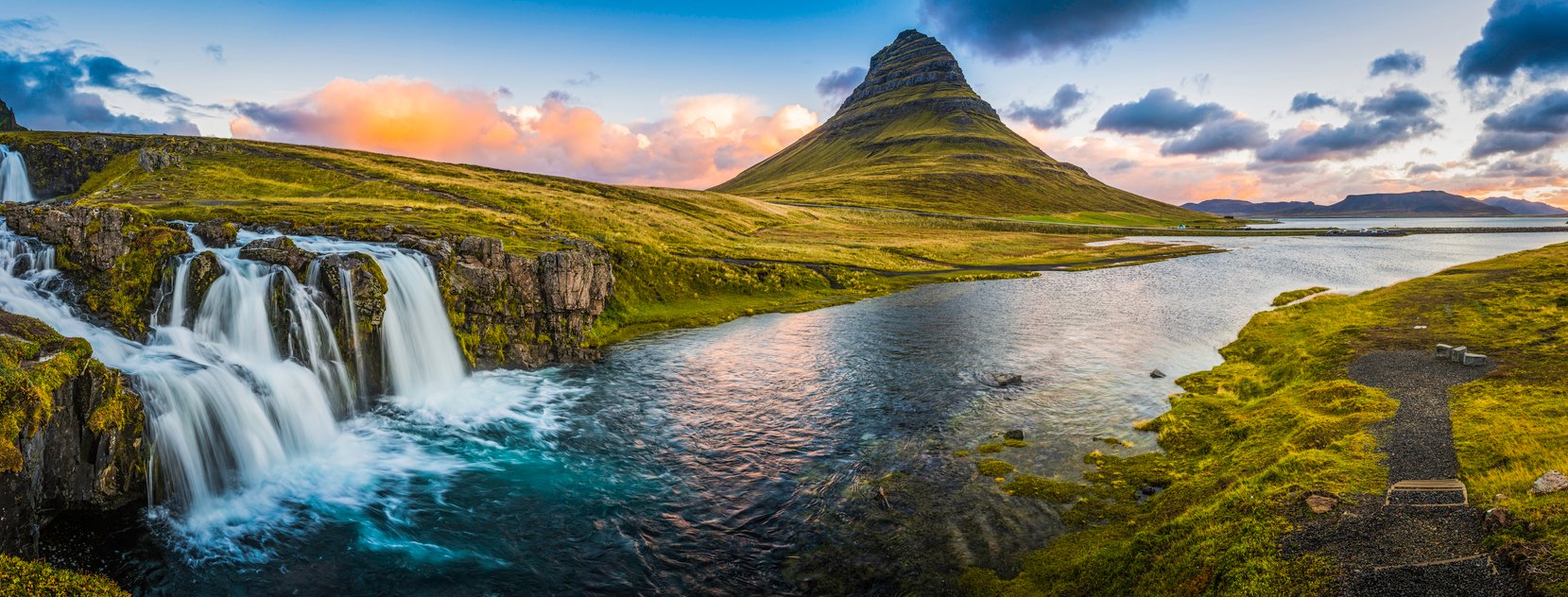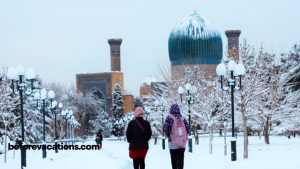Iceland is a land of stunning landscapes and natural beauty. Choosing the best time to visit can greatly enhance your experience.
Iceland’s seasons offer unique experiences. From summer’s midnight sun to winter’s Northern Lights, each time of year brings something special. Whether you’re chasing waterfalls, exploring volcanic wonders, or simply soaking in geothermal pools, timing your visit can make all the difference.
In this guide, we’ll explore the best months to see Iceland’s wonders. Discover when the weather is ideal, when crowds are fewer, and when nature is at its most spectacular. Whether you’re planning your first trip or returning for more adventures, knowing the best time to visit ensures you experience Iceland at its finest. Let’s uncover the secrets of Iceland’s seasons.
Iceland’s Climate Overview
Iceland’s climate varies widely, offering unique experiences year-round. Its weather is influenced by its location and topography. This makes it a fascinating destination for travelers. Understanding Iceland’s climate helps in planning the perfect trip. Each season offers distinct landscapes and activities. The island’s weather can be unpredictable, yet manageable.
Temperature Variations
Iceland’s temperatures change with the seasons. Winters are cold, but not freezing. Temperatures range from 0°C to -10°C. Summers are cool and mild. Expect temperatures between 10°C and 15°C. Coastal areas remain milder than inland regions. The Gulf Stream keeps the climate moderate.
Seasonal Weather Patterns
Winter brings short days and long nights. Snow blankets much of the country. It is a magical time for the Northern Lights. Spring introduces longer days and melting snow. Wildflowers bloom across the landscapes.
Summer offers endless daylight with the Midnight Sun. This is ideal for exploring. Autumn brings vibrant foliage and cooler temperatures. Each season provides unique beauty and adventures.
Summer In Iceland
Summer in Iceland is a magical experience that offers visitors a unique blend of natural beauty and vibrant culture. With temperatures hovering between 10°C to 15°C (50°F to 59°F), the weather is perfect for exploring the stunning landscapes. This season brings extended daylight hours, providing ample time to soak in all that Iceland has to offer.
Midnight Sun Experience
Imagine a sun that never sets, casting a golden glow across the land. That’s the magic of the Midnight Sun in Iceland. From late May to late July, you can witness nearly 24 hours of daylight. This phenomenon allows you to explore at odd hours, making it feel like you have the entire country to yourself.
Consider taking a late-night hike in Þingvellir National Park. Watching the sun dip slightly and then rise again is a surreal experience. The light at midnight is unlike any other, bathing the landscape in soft hues that are perfect for photography.
Outdoor Activities
Summer is the ideal time to engage in outdoor activities in Iceland. The pleasant weather opens up a world of possibilities for adventure seekers. Whether it’s hiking, biking, or horseback riding, there’s something for everyone.
Join a whale-watching tour from Reykjavik and marvel at the majestic creatures in their natural habitat. Or explore the numerous trails that lead to hidden waterfalls and geothermal hot springs. These activities not only provide thrills but also allow you to connect deeply with nature.
Why not try something new? Have you ever gone glacier hiking? Iceland’s summer offers the perfect opportunity for this exhilarating activity. With safety gear and a guide, you can walk across ancient ice formations and gaze into stunning blue crevasses.
Summer in Iceland is more than just a season—it’s an opportunity. An opportunity to see the world from a different perspective, to push your boundaries, and to make unforgettable memories. So, when are you planning your visit?
Winter Wonders
Experience Iceland’s enchanting beauty during winter. Witness the Northern Lights dance across the sky. Explore ice caves and frozen waterfalls for an unforgettable adventure.
Visiting Iceland during the winter months unveils a magical landscape draped in snow and ice. This season transforms the country into a wonderland, offering unique experiences that are both captivating and exhilarating. Whether you’re chasing the elusive Northern Lights or embarking on thrilling winter sports, Iceland in winter promises memories that will last a lifetime.Northern Lights Adventure
The Northern Lights, or Aurora Borealis, are a spectacular natural phenomenon that draws visitors from around the globe. Winter is the best time to witness these dancing lights in Iceland. The long nights and clear skies create ideal viewing conditions. Imagine standing under a starlit sky, the crisp air around you, as vibrant greens and purples swirl above. It’s a scene that feels almost otherworldly. You can join guided tours that take you to the best spots away from city lights, increasing your chances of a successful sighting. Plan your trip between October and March for the best opportunities. Be patient, as the lights are unpredictable, but the reward is worth the wait.Winter Sports Opportunities
Iceland isn’t just about serene beauty in winter; it’s also a playground for winter sports enthusiasts. From skiing to snowmobiling, the country offers a range of activities to satisfy your adventurous spirit. The ski resorts in the north, like Akureyri, offer slopes suitable for all levels, from beginners to seasoned skiers. If skiing isn’t your thing, consider snowshoeing across the vast, untouched snowfields. Snowmobiling on a glacier is an adrenaline-pumping experience you shouldn’t miss. The Langjökull glacier provides a stunning backdrop as you zip across its icy surface. Have you ever tried ice climbing? Iceland’s frozen waterfalls offer a unique challenge for climbers. It’s an activity that pushes your limits and rewards you with breathtaking views. So, pack your winter gear and dive into the snowy adventures Iceland has to offer. Are you ready to experience the thrill?
Credit: icelandtrippers.com
Spring Blooms
Spring in Iceland transforms the landscape with vibrant blooms. March to May offers mild weather and stunning scenery. Witness the awakening of nature and enjoy longer daylight hours, making it the perfect time for exploration.
Spring Blooms in Iceland offer a breathtaking transformation from icy landscapes to vibrant fields. As the snow melts, nature awakens with a burst of color. If you’re seeking a unique travel experience, spring is the perfect time to witness Iceland’s stunning rebirth. Imagine wandering through fields dotted with wildflowers, the air crisp with freshness, and the sights of emerging life all around you.Emerging Wildlife
Spring in Iceland is a time of awakening for the country’s wildlife. Puffins return to the cliffs, creating a spectacle with their colorful beaks and busy activities. You might spot seals lounging on the coast, enjoying the warmer days. Birdwatchers will find this season especially rewarding, with migratory birds filling the skies. Have you ever thought about the thrill of seeing a puffin dive into the ocean right before your eyes?Thawing Landscapes
The thawing landscapes of Iceland during spring are a sight to behold. Waterfalls become more vigorous as the ice gives way to rushing streams. The earth seems to breathe anew, with moss-covered terrains and budding greenery. Take a stroll near Gullfoss and feel the mist on your face. How about hiking through Þingvellir National Park where the land is slowly coming back to life? You’ll witness a blend of icy remnants and fresh blooms, creating a unique tapestry of nature. Spring in Iceland is not just about the visual beauty; it’s an immersive experience. It’s the season where you can truly connect with nature’s cycles. Are you ready to explore the magic of Iceland’s spring blooms?Autumn Colors
When the crisp air of autumn begins to embrace Iceland, the landscape transforms into a stunning palette of red, orange, and gold. The season of autumn is a magical time in Iceland when nature paints vivid colors across its sweeping vistas. This mesmerizing transition draws visitors from around the world, eager to witness the vibrant hues that define the Icelandic countryside during this season.
Foliage And Scenic Drives
Autumn in Iceland is perfect for a scenic drive. The roads are often lined with colorful foliage that offers breathtaking views. Imagine driving through the Golden Circle or along the South Coast, where the vibrant leaves contrast beautifully with the rugged terrain.
Consider renting a car to explore at your own pace. This allows you to stop frequently and capture the beauty through your lens. Each bend in the road reveals a new scene, encouraging you to linger and appreciate the natural artwork.
Have you ever driven through a forest in full autumn bloom? In Iceland, such experiences are enhanced by dramatic landscapes. Make sure your camera is ready to capture these moments.
Harvest Festivals
Autumn in Iceland is also a time for celebration, with numerous harvest festivals taking place across the country. These festivals provide a unique glimpse into Icelandic culture and traditions.
Participate in local events where you can enjoy traditional foods and music. The Reykjavik International Film Festival is one such event that showcases both Icelandic and international films. It’s a cultural feast that complements the visual feast provided by nature.
Engaging with locals during these festivals can enrich your experience. You’ll learn about Icelandic customs and perhaps even pick up a few words of the language. What better way to connect with a place than through its people and their stories?
As you plan your visit to Iceland, consider the allure of autumn. It promises both natural beauty and cultural richness. How will you capture the essence of Iceland’s autumn colors?
Cultural Events And Festivals
Iceland is a country rich in cultural heritage, where traditions and modern influences blend seamlessly. The best time to visit can often align with its vibrant festivals and cultural events. Attending these events offers a unique glimpse into the Icelandic way of life. Whether you’re dancing under the midnight sun or enjoying cozy winter gatherings, Iceland’s cultural calendar has something for everyone.
Summer Solstice Celebrations
One of the most magical times to visit Iceland is during the summer solstice. The sun barely sets, giving you endless daylight to explore. Locals celebrate this phenomenon with various events and gatherings.
Imagine joining a bonfire party on a black sand beach or participating in a midnight hike. The energy is contagious, and the camaraderie among locals and visitors is heartwarming. Have you ever experienced a night that never turns dark?
Music festivals also abound during this time. Secret Solstice, for example, is a major music festival that attracts international artists and fans. It’s not just a concert; it’s a celebration of life and light.
Winter Traditions
Winter in Iceland offers its own charm, with unique traditions that warm the soul. The darkness and cold are no match for the Icelandic spirit. Have you ever wondered how a country with such long winters stays so vibrant?
The Yule Lads, Iceland’s playful version of Santa Claus, bring joy and mischief throughout December. Each of the 13 lads has a unique personality, and you might spot them leaving small gifts or playing harmless pranks.
In February, the country celebrates Þorrablót, a midwinter feast that dates back to pagan times. It’s a chance to sample traditional Icelandic foods like fermented shark and smoked lamb, offering a true taste of Iceland’s history.
These festivals offer more than just entertainment; they provide insight into the resilience and creativity of the Icelandic people. Wouldn’t it be exciting to immerse yourself in these age-old traditions?
Best Time For Budget Travelers
Iceland is a dream destination with stunning landscapes and natural wonders. But, the costs can deter budget travelers. Luckily, the off-peak season offers a solution. Travelers can enjoy Iceland’s beauty without breaking the bank.
Off-peak Discounts
The best time for budget travelers is from September to November. During these months, Iceland sees fewer tourists. Airlines and tour operators often offer discounts. This means cheaper flights and lower tour prices. You can explore more for less money.
Affordable Accommodations
Accommodation costs drop significantly in the off-peak season. Hotels and guesthouses lower their rates to attract guests. Consider staying in hostels or Airbnb for even more savings. Booking in advance can lead to better deals. Some places even offer free breakfast.
:max_bytes(150000):strip_icc()/NorthernLights_MountainandRiver_Photographer-SnorriThorTryggvason-fbe57aa3699e4547afa7e2940026e3cf.jpg)
Credit: www.travelandleisure.com
Packing Tips For Every Season
Explore Iceland’s beauty at its peak during summer. Pack light layers for mild temperatures and longer daylight hours. Winter calls for thermal wear to keep warm in icy landscapes.
Visiting Iceland is like stepping into a world of natural wonders, but packing for its unpredictable weather can be a challenge. Iceland’s climate varies dramatically with each season, and being prepared ensures you enjoy every moment without worry. Whether you’re chasing the Northern Lights or basking in the Midnight Sun, packing right is essential.Essential Gear For Cold Weather
When visiting Iceland during the colder months, your packing list needs a few key items. A high-quality, waterproof jacket is your best friend. It keeps you dry during the frequent rain and snow showers. Layering is crucial. Consider thermal underwear, a wool sweater, and a fleece jacket. These layers trap warmth and can be adjusted as temperatures change. Don’t forget insulated gloves and a warm hat. A friend once thought gloves were optional and regretted it during a chilly glacier hike. Trust me, your fingers will thank you.Summer Essentials
Icelandic summers may be mild, but they still demand thoughtful packing. Lightweight, breathable clothing is ideal for warmer days. However, always pack a light jacket; summer evenings can be surprisingly cool. Sturdy hiking boots are a must. Iceland’s rugged terrains are best explored on foot, and proper footwear makes all the difference. Sunglasses and sunscreen are vital. The sun can be unexpectedly intense, especially with the long daylight hours. Protect your skin and eyes to fully enjoy Iceland’s stunning landscapes. Packing smart makes your Iceland adventure seamless. Are you ready to experience this remarkable land with the right gear?
Credit: www.kandooadventures.com
Conclusion
Iceland offers amazing views and unique experiences year-round. Summer brings long days and pleasant weather. Winter reveals the enchanting Northern Lights and cozy landscapes. Spring and fall mix mild temperatures with fewer crowds. Each season has distinct beauty and activities.
Consider your interests when planning the trip. Whether exploring glaciers, soaking in hot springs, or admiring puffins, Iceland never disappoints. Choose the right time based on your preferences. Make the most of your adventure in this captivating land. Create unforgettable memories.
Iceland awaits with its majestic wonders. Ready for your journey? Enjoy every moment!











